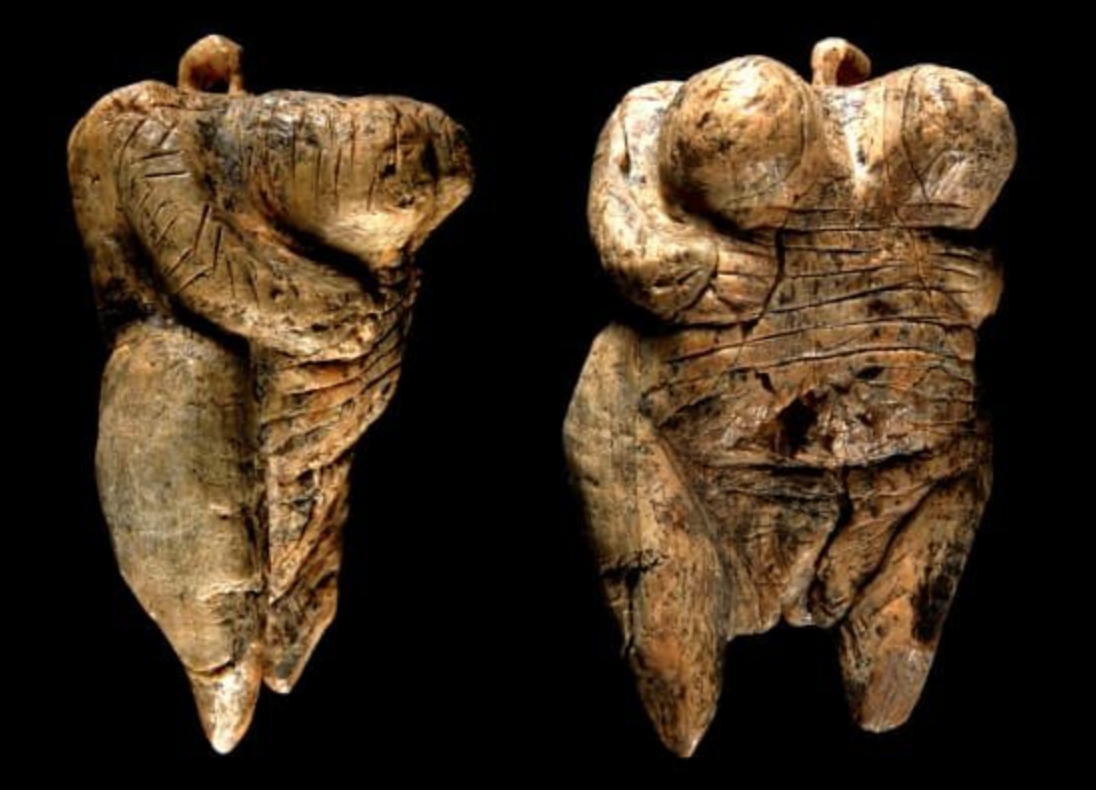Teach This Poem, though developed with a classroom in mind, can be easily adapted for remote-learning, hybrid-learning models, or in-person classes. Please see our suggestions for how to adapt this lesson for remote or blended learning. We have also noted suggestions when applicable and will continue to add to these suggestions online.

Look closely at the image of the “Venus of Hohle Fels.”
The following activities and questions are designed to help your students use their noticing skills to move through the poem and develop their thinking about its meaning with confidence, using what they’ve noticed as evidence for their interpretations. Read more about the framework upon which these activities are based.
- Warm-up: Look closely at the image of the “Venus of Hohle Fels.” What stands out to you about this figurine? Why?
- Before Reading the Poem: Work with a small group to read and summarize one section of the “Stone Age” article here. Then, jigsaw with other groups to learn more about the stone age.
- Reading the Poem: Silently read the poem "From the Stone Age" by Alice Corbin Henderson. What do you notice about the poem? Note any words or phrases that stand out to you or any questions you might have.
- Listening to the Poem (enlist two volunteers to read the poem aloud): Listen as the poem is read aloud twice, and write down any additional words and phrases that stand out to you. Or, opt to listen to a reading of the poem here.
- Small-group Discussion: Share what you noticed about the poem with a small group of students. Based on this poem and the resources from the beginning of class, how does this poem connect to the sculpture from the beginning of class and the landscapes? What is the landscape of this poem?
- Whole-class Discussion: How would you describe the speaker in the poem? What is the speaker’s relationship to the environment? What do you think of these lines: My thoughts now are the thoughts of a stone, / My substance now is the substance of life itself; / I have sunk deep into life as one sinks into sleep; / Life is above me, below me, around me?”
- Extension for Grades 7-8: In the poem, the speaker states “I live and I think and I dream as a stone.” Write a poem or dialogue in the voice of a stone. What must it be to live, think and dream as a stone? Share your poem with the class.
- Extension for Grades 9-12: Learn more about the poem by reading the “About the Poem” section of the poem. Imagine creating your own being inspired by this poem. What might this being look like? Create a poem, collage, song, painting, sculpture, etc. that bring this being to life. Share your being with the class. How does this compare to the poem?
“A persona poem is a poem in which the poet speaks through an assumed voice. Also known as a dramatic monologue, this form shares many characteristics with a theatrical monologue: an audience is implied; there is no dialogue; and the poet takes on the voice of a character, a fictional identity, or a persona. Because a dramatic monologue is by definition one person’s speech, it is offered without overt analysis or commentary, placing emphasis on subjective qualities that are left to the audience to interpret.” Read more about persona poems.
Persona Poem: a poem also known as a dramatic monologue in which the poet assumes the voice of another person, fictional character, or identity. Read more.
